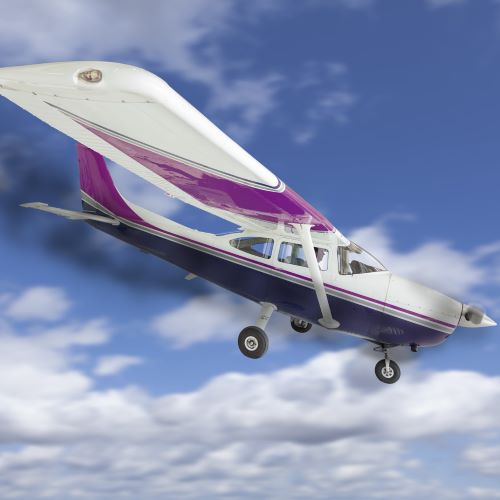04 September 2025

A new study shows that piloting a light aircraft remains an inherently risky business, accounting for over 90% of aviation-related fatalities*.
Private air travel – termed ‘general aviation’ as opposed to commercial flights or freight operations – has a poor safety record, with significantly higher accident rates compared to commercial aviation.
In a review of 46 studies exploring fixed-wing general aviation accidents, aviation researchers from the University of South Australia (UniSA) have shed new light on persistent safety challenges facing general aviation pilots, highlighting a disproportionate number of fatalities.
The study, published in the Journal of Air Transport Management, found that human factors and training deficiencies are the leading contributors to fatal general aviation accidents and warrant urgent attention.
Lead researcher Emma Sheffield, a UniSA PhD candidate and aviation tutor, says general aviation is the foundation for future airline pilots – where all civilian pilots begin their journey.
“It is not just a recreational sector, but an integral part of Australia’s aviation system, yet the data consistently shows a poor safety record when compared with commercial airline operations,” Sheffield says.
Human factors were cited in more than half the studies reviewed. These include pilot error, poor decision-making and reduced situational awareness, especially in poor weather and while flying at night.
“Flying into conditions where visibility is severely reduced – such as cloud, fog or heavy rain – requires pilots to fly solely by reference to instruments. Without proper training, that can be fatal as pilots often lose control within minutes due to spatial disorientation.”
Flights conducted in poor visibility are seven times more likely to lead to fatal crashes. Spatial disorientation is common among less experienced pilots and night operations compound the danger, with accident rates up to eight times higher than those during the day.
The study identified specific flight phases (take off, landing and low-altitude manoeuvring) as particularly hazardous because there is little margin for error and many fatal accidents occur due to stalls or loss of control in these critical moments.
The review found that a lack of recurrent training, particularly in emergency procedures such as engine failure recovery and decision-making under pressure, was a critical safety gap.
Co-author UniSA Associate Professor Paul Lee, says that private general aviation pilots may fly infrequently, maintaining only the minimum number of flying hours to be considered legally current.
“While recent requirements ensure legal currency, they are not a guarantee of proficiency. Previous studies have shown that skills decline sharply after long breaks from flying” says Assoc Prof Lee.
“We need to normalise ongoing, hands-on training, whether in the air, in simulators, or through the use of emerging technologies.”
The researchers have called for more affordable and accessible methods of delivering recurrent training.
“In-air training can be costly, Sheffield says, “so expanding the use of tools such as flight simulators provides general aviation pilots with the opportunity to practise emergency scenarios and build decision-making skills in a safe and cost-effective way.
“Emerging technologies such as virtual reality and artificial intelligence also hold potential for developing alternative training methods that are more accessible to pilots.”
Researchers also highlighted a gap in mental health research focused on general aviation.
A recent industry report* on culture and wellbeing in the Australian GA workforce found that 76% of current workers are concerned about poor mental health in the industry, with many citing negative impacts from excessive workloads, fatigue, financial stress, and toxic workplace culture.
These findings suggest mental health may be a hidden contributing factor in some general aviation accidents, highlighting the need for further investigation.
While most aviation safety improvements rely on analysing past incidents, the authors argue for more proactive measures, using real-time flight data to identify risky behaviours before they result in accidents.
“General aviation doesn’t have to accept its poor safety record. We know where the risks are and it’s time to act on that knowledge,” according to co-author UniSA Aviation Professor Shane Zhang.
“A systematic review of general aviation accident factors, effects and prevention’ is published in the Journal of Air Transport Management. DOI: 10.1016/j.jairtraman.2025.102859
Notes for editors
*Aviation Occurrence Statistics 2010 to 2019
*Navigating Aviation, & Bastion Insights. (2025, August 11). National general aviation culture and wellbeing survey: Final report. Navigating Aviation. https://www.navigatingaviation.com/research-and-resources
…………………………………………………………………………………………………………………………
Media contact: Candy Gibson M: +61 434 605 142 E: candy.gibson@unisa.edu.au




